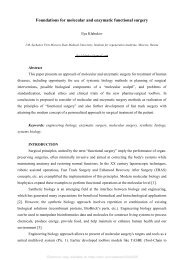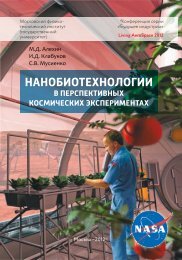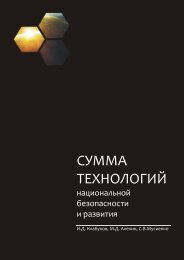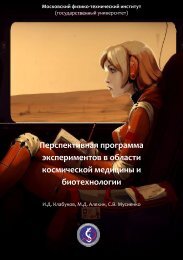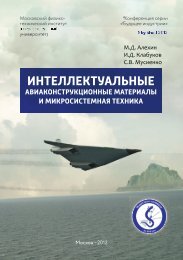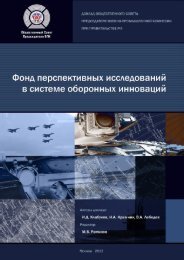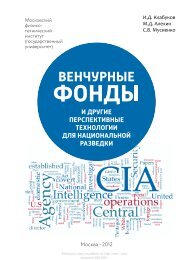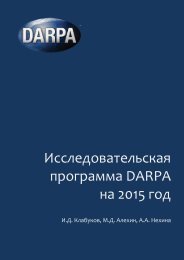Engineering Biology Problems Book (2021, Obninsk Edition)
You also want an ePaper? Increase the reach of your titles
YUMPU automatically turns print PDFs into web optimized ePapers that Google loves.
2. Mutations in mitochondrial DNA. Spare copies of mitochondrial genes in nuclear DNA will solve
the problem of mtDNA damage.
human organ systems based on tissue functions, the association of organs or their functional
components with stem cell niches, or another alternative classification.
SOLUTION: The solution to this problem is still being worked on
2.57 Disease patterns. Some unfortunate versions of current expert diagnostic systems are based on
binary tree models. However, the use of such systems tends to fail to benefit clinicians because of the
historical tradition of systematizing diseases. Propose a system for classifying human diseases that are
not inconsistent with diagnosis.
SOLUTION: The solution to this problem is still being worked on
2.58 Fetal surgery. Fetal surgery is performed in cases where antenatal correction of the condition
can improve the health and life outcomes of the newborn. As a rule, such operations are currently
performed in cases of cardiac pathologies. Biliary atresia is a rare congenital pathology in which the
biliary tract is obstructed or absent. Reconstructive surgery cannot be performed if the intrahepatic
ducts are obstructed, and liver transplantation is therefore indicated. Suggest a method of surgical
therapy for biliary atresia based on existing methods of fetal surgery.
SOLUTION:
We propose to use methods of fetal molecular surgery based on the injection of a modified hepatitis
virus with a cloned growth factor sequence and a removed replicative part of the virus.
2.59 Fetus in fetu. Fetus in the fetus is a pregnancy disorder with a frequency of 1 in 500,000 cases
which is associated with abnormalities in embryogenesis. Suggest a surgical method to treat such
systemic disorders of morphogenesis.
SOLUTION: The solution to this problem is still being worked on
2.60 Code "Prometheus". In 2013, the Russian Ministry of Defense announced a competition for the
development of a bioengineered human liver based on cellular technologies, publishing detailed terms
of reference and a work plan [71]. Evaluate the feasibility and effectiveness of the proposed approach.
SOLUTION: The solution to this problem is still being worked on.
[71 Bioengineered liver (code "Prometheus"). http://doi.org/10.5281/zenodo.2549274.].
2.61 Medicines for old age. Currently, there is no unified theory of aging that would explain the
observed effects. Among the most popular concepts are the following: a) Medawar’s evolutionary
concept (the "mutation accumulation theory", according to which an organism accumulates mutations
during life, thereby disrupting normal protein synthesis); b) the theory of "spent soma" proposed by T.
Kirkwood, which postulates the existence of genes that control the redistribution of energy resources,
and the weakening of repair mechanisms throughout life; c) the theory of the "life expectancy
program", which formulates the possibility of survival in extreme conditions, in which this program
allows the body to exceed its normal life span by entering a "maintenance mode". Suggest ways to
prolong life, the implementation of which corresponds to each of the above theories of aging.
SOLUTION: The solution to this problem is still being worked on
2.63 Biological waste. British biogerontologist Aubrey de Gray, within the framework of the SENS
program ("Strategies for achieving negligible aging by engineering methods") for an increase in life
expectancy, assumes getting rid of the damage that accumulates in the human body throughout life.
Suggest your ideas, what damage would you like to get rid of, and how?
SOLUTION: In the book by A. Turchin and M. Batin "Futurology", the scientific foundations of the
SENS program are described as follows:
1. Mutations in nuclear DNA. Replacing cells with short telomeres with your own cells with long
telomeres, created in the laboratory. Such periodic transplantations would make it possible to maintain
a constant number of functional cells in all organs in the absence of the threat of the emergence of
tumors.





